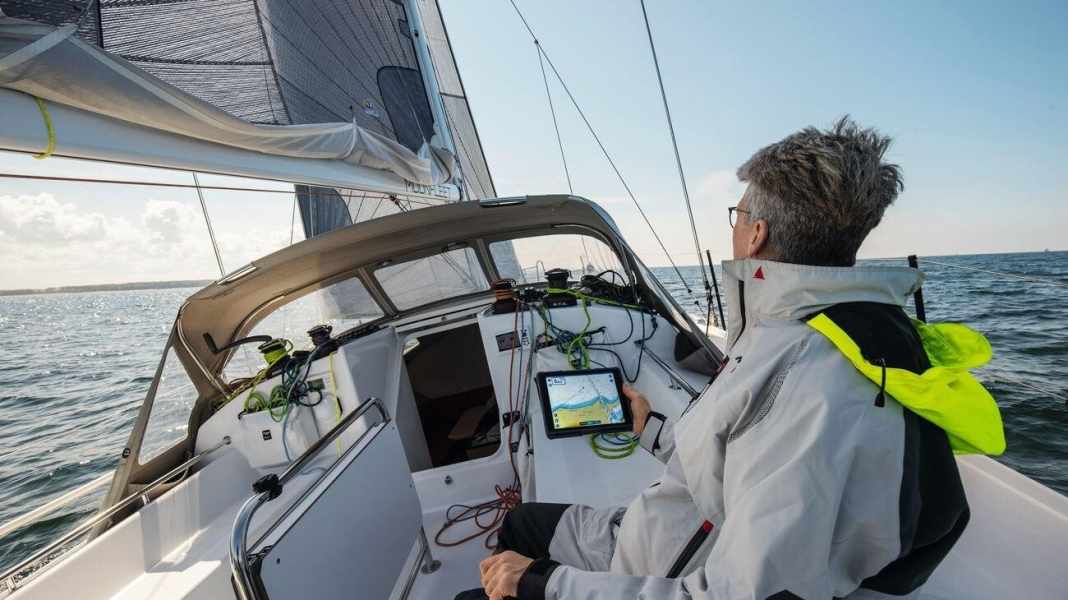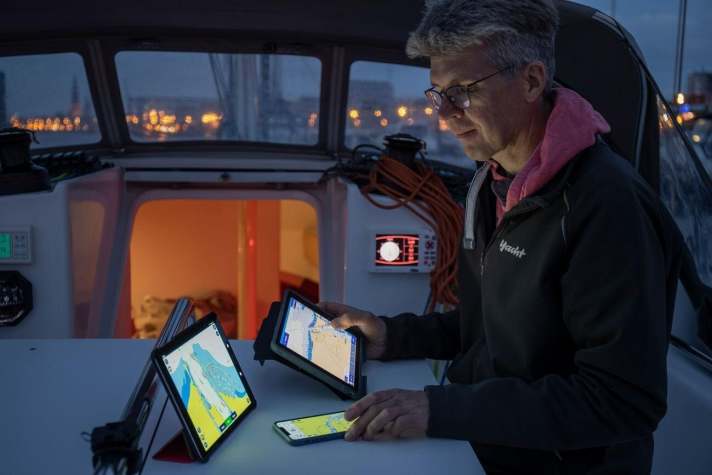
According to YACHT surveys among readers, almost 60 per cent of sailors now use navigation apps in addition to the electronics installed on board. The advantages are obvious: the display can be taken into the cockpit, below deck or home for planning, and it is also protected against theft. For crews of smaller yachts, their own tablet or smartphone often becomes the sole electronic navigation tool alongside the paper chart due to a lack of space for built-in devices.
And the programmes can do more and more: for the last year or two, the connection to existing on-board electronics via W-Lan-capable models has been on the rise; this means that depth, GPS data, speed and wind data can also be transferred to your own device. In addition, AIS signals can increasingly be displayed, an important safety feature. The boundaries between mobile devices and fixed electronics are becoming blurred. And there is a wealth of additional useful functions: Auto-routing, MOB, weather forecasts with grib files, current data and much more.

And in the last year or two, it has become apparent that even the major electronics manufacturers, who have long tried to dismiss apps as unwelcome, inferior competition, are taking them seriously. For this reason, Garmin, Navico and others have recently been buying up app manufacturers and integrating them into their product portfolios. More and more of these programmes are now available in Android versions, and some apps even run on Windows computers or MacOS.
